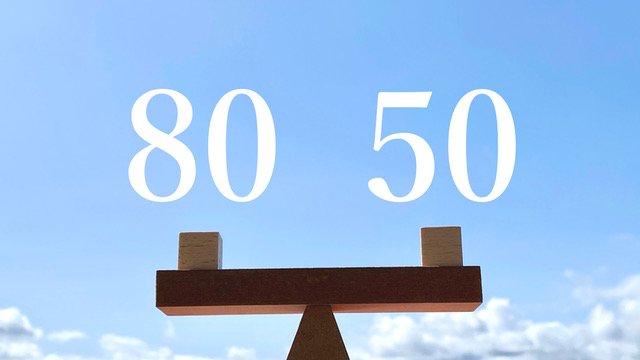Sometimes I wonder what might have happened to me had I stayed in Japan. Might I have joined the ranks of the million-plus hikikomori (shut-ins withdrawn from society) that exist in Japan today? This is an unsettling thought. It’s difficult to dismiss the hikikomori issue simply as someone else’s problem because I think I can understand their plight, at least partially.
Hikikomori means the state of being shut in, and today also the individual being afflicted by it. Those hikikomori refuse to leave their parents’ homes, sequestering themselves from society and family, and confining in a single room for more than 6 months, often for years, even decades in extreme cases. “The 80/50-problem” (soon to be “60/90-problem”) has become a focus of media attention and refers to situations in which aging parents in their eighties keep supporting their shut-in children entering their fifties, wherein the entire family is isolated from society and lives in poverty as a result. And once their parents pass away, those middle-aged shut-ins are left with no means of support and are unable to take care of themselves.
According to Tamaki Saito—a Japanese psychiatrist who coined the term, hikikomori, referring to the condition and a leading expert in the field—the number of hikikomori is probably much higher than the government's estimate of 1.15 million, approx. 1% of the population (541,000 between the ages 15 and 39; 613,000 between ages 40 and 64; and the vast majority of them are men). He estimates it is more like 2 million and speculates that the number will continue climbing, eventually topping ten million (nippon.com 09/17/19). This is a dire social problem in Japan, and an accurate number is impossible to ascertain because both hikikomori and their families feel ashamed, so they keep their situations secret.
The hiring freeze following the burst of the bubble economy in the early 1990s created a swath of young adults who couldn’t land jobs. Like failing at college entrance exams, failing at job searches likely fed into a sense of defeat and shame, and might have devastated vulnerable individuals. And in Japan, once derailed from their desired paths, it can be extremely difficult to start over. Japanese society offers fewer second chances than western societies. This partly explains why the number of hikikomori is largest among the ages from 40 to 64.
Another upticking trend is futoko, refusing to attend school. In 2018, the government reported 164,528 such students (in elementary and junior high school)—a significant jump from the previous year of 144,031 (bbc.com 12/23/19). And this number is expected to keep rising. The futoko syndrome is said to pose a high risk as a precursor to hikikomori.
The UNICEF Innocenti’s Report Card published in 2020 ranked Japanese schoolchildren the second from the bottom among 38 participating countries in their mental well-being, while ranking them at the top in physical well-being. The students’ poor life satisfaction, rampant school bullying and the high suicide rate contributed to this dismal ranking. Some researchers point their fingers at the rigid education system, “exam hell” and excessive competition to get into prestigious colleges, and at the narrow definition of “success” as detrimental to the students’ mental health.
There may be many possible reasons for people becoming shut-ins and for students refusing to attend school. For example, the conformist society of Japan can be really tough to navigate for those who don't (or can't) fit the norm. The sociocultural values and expectations may feel oppressive, intolerant, unforgiving or punitive, and suffocating for those who stick out, as in the old Japanese saying, "The nails that stick out get hammered down." Keeping a low-profile is therefore a survival strategy. The social system also emphasizes shame to reinforce conformity.
But notably, one of the most common denominators for those troubled adults and youths is said to be family dysfunction. To build a healthy foundation, it is essential for a child to have a safe haven at home, where the child can return to, unwind, rejuvenate and recharge after “battling” in the harsh world. Without a nurturing home environment, the reality of that world may take a heavy toll on a child’s psyche. And if parents fail to teach certain culture-specific skills necessary to operate in intricate social interactions in Japan, such as the ability to switch between honne (one’s true feelings and thoughts) and tatemae (diplomatic façade), life can become doubly challenging.
Values such as humility, self-reflectiveness and self-sacrifice that are prized and inculcated early on, when taken literally and deeply internalized, may pose a risk of developing into self-deprecation and low self-regard. In addition, some other feelings and behaviors that resemble complex PTSD—such as perfectionism, negative thinking patterns, toxic shame and guilt, difficulty saying no and setting boundaries—seem to be also culturally reinforced (maybe even encouraged) in Japan.
Japan is a beautiful country with so many wonderful cultural traditions. When taken together all the aforementioned factors, however, it would be surprising if such a sociocultural climate doesn’t create a fertile breeding ground for all kinds of mental health conditions. But, because of the “shame culture” and a heavy stigma surrounding mental health issues, those who are afflicted opt out of seeking the help they need to live happier and more fulfilled lives. They choose instead to hide out and suffer in silence. And the longer they withdraw, the harder it becomes for them to reintegrate into society.
Hikikomori are perhaps canaries in the coal mine, reflecting dysfunctions in a society that needs serious reform.


